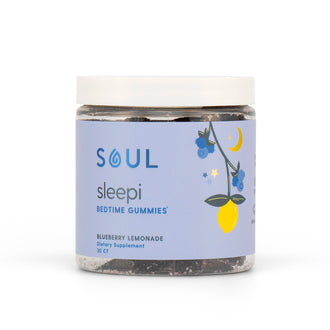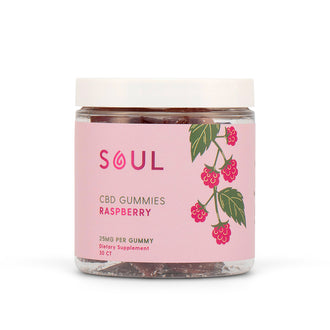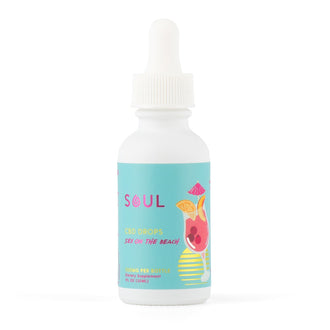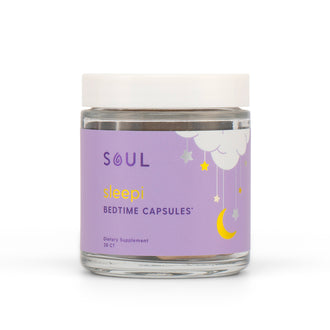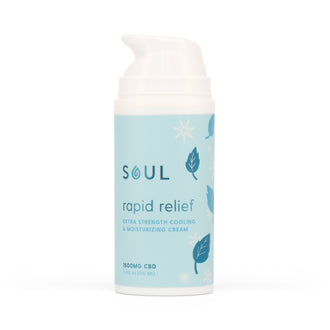Key Takeaways
- THCP's Unique Structure: THCP differs from THC primarily in its chemical structure, possessing a longer alkyl side chain, which may significantly enhance its potency and effects on the endocannabinoid system.
- Potential Medical Applications: While THC is well-established in medical treatments, THCP shows promise but requires more research to fully understand its therapeutic benefits and safety.
- Evolving Legal and Regulatory Frameworks: The legal status of THCP is still being determined, reflecting the need for regulations to adapt to discoveries in cannabinoid science.
In the rapidly evolving world of cannabis research, two compounds stand at the forefront of scientific and consumer interest: THC, the most well-known psychoactive component of cannabis, and THCP, a newly discovered cannabinoid that promises even greater potency. As we explore the complexities of these two molecules, understanding their chemical structures, effects on the human body, medical potential, and legal landscapes becomes crucial.
THC: The Primary Psychoactive Component
THC, or tetrahydrocannabinol, is the most recognized psychoactive compound found in the cannabis plant. It's known for its ability to produce euphoric and mind-altering effects, making it a key ingredient in many cannabis products. THC works by interacting with the body's endocannabinoid system, particularly binding to cannabinoid receptors in the brain. This interaction can affect mood, memory, and other cognitive functions. Its psychoactive properties have made THC a subject of both recreational use and scientific research.
Explore The Future Of Wellness With SoulStep into the world of cannabinoids and enhance your well-being journey. Soul offers a curated selection of premium products, crafted with the utmost care for purity and potency.
|
Effects And Uses Of THC
THC is celebrated for its range of effects, from inducing relaxation and euphoria to alleviating pain and nausea. It's this versatility that has made THC-rich products popular among a diverse group of users. Beyond recreational enjoyment, THC has therapeutic applications, offering relief for symptoms like chronic pain and insomnia. Its ability to stimulate appetite is particularly beneficial for individuals undergoing chemotherapy. However, the intensity of THC's effects can vary significantly depending on the dosage and the individual's tolerance.
THC In Medical Treatment
Chronic Pain Relief
THC has been found effective in managing chronic pain, a prevalent issue that affects millions globally. By binding to cannabinoid receptors in the brain, THC can alter pain perception, providing much-needed relief for patients. Its analgesic properties are particularly beneficial for conditions like arthritis, migraine, and fibromyalgia.

Mental Health Management
THC's impact on the endocannabinoid system also extends to mental health, where it has been used to treat conditions such as PTSD and anxiety. While THC can induce relaxation and reduce stress, it's important to approach its use cautiously, as high doses may exacerbate anxiety in some individuals.
Neurological And Movement Disorders
Research indicates that THC can offer symptomatic relief for neurological and movement disorders. THC's interaction with the endocannabinoid system can help reduce muscle spasticity and tremors, improving the quality of life for those affected.
THCP: A Potent Cannabinoid
THCP is a newly identified cannabinoid that has garnered attention for its potent effects, which are believed to surpass those of THC. This compound shares a similar molecular structure with THC but has a longer alkyl side chain, which may account for its increased potency. The discovery of THCP has sparked interest in its potential applications and effects, expanding the scope of cannabinoid research.
Discovery Of THCP
THCP was discovered during a detailed analysis of a cannabis variety, where scientists identified this novel compound with a unique chemical structure. This discovery was significant as it hinted at the existence of other yet-to-be-discovered cannabinoids. THCP's identification has opened new avenues for research, particularly in understanding how slight variations in chemical structure can dramatically alter a cannabinoid's effects on the human body.
Chemical Structure Of THCP
Molecular Composition
THCP's molecular structure is similar to THC but with a critical difference: THCP has a longer alkyl side chain, consisting of seven carbon atoms compared to THC's five. This structural variation is believed to enhance THCP's affinity for CB1 receptors in the brain, potentially making it more potent than THC.
Interaction With CB1 Receptors
The extended alkyl side chain of THCP may allow for a more effective interaction with CB1 receptors, which are primarily responsible for the psychoactive effects of cannabinoids. This increased affinity could explain the heightened potency of THCP, suggesting that even small doses could have significant effects.
Implications For Potency And Efficacy
The unique structure of THCP raises questions about its potency and efficacy compared to THC. Understanding these differences is crucial for both researchers and consumers, as it impacts dosing, safety, and potential therapeutic applications.
Psychoactive Effects: THC vs THCP
THC's Psychoactive Profile
THC is known for its psychoactive effects, which can range from mild euphoria and relaxation to more intense experiences depending on the dose. These effects are primarily mediated through THC's interaction with CB1 receptors in the brain, influencing mood, perception, and cognitive functions.
THCP's Enhanced Potency
Preliminary research suggests that THCP may be significantly more potent than THC due to its stronger affinity for CB1 receptors. This could mean that THCP produces more pronounced psychoactive effects, even at lower doses, highlighting the need for careful dosing and regulation.
Comparing User Experiences
The user experience of THC versus THCP can vary greatly, with THCP potentially offering a more intense and longer-lasting psychoactive effect. Understanding the distinctions between these two cannabinoids is essential for consumers, particularly those new to cannabis products, to make informed choices.
Practical Considerations For Use
Dosing And Consumption Methods
When it comes to using THC and THCP products, dosing is a critical consideration. Given THCP's increased potency, users should start with lower doses and adjust based on their experience. Various consumption methods, including inhalation, oral ingestion, and topical application, offer different onset times and effects.

Tolerance And Individual Responses
Individual tolerance levels to THC and THCP can vary widely, influenced by factors such as genetics, frequency of use, and overall health. Users should be mindful of their responses and adjust their consumption accordingly to avoid undesirable effects.
Safety And Precautions
While cannabis products are generally considered safe, it's important to use them responsibly, especially with potent cannabinoids like THCP. Users should be aware of potential side effects and interactions with other medications, and consult healthcare providers when in doubt.
The Future Of Cannabinoid Innovation
Exploring Lesser-Known Cannabinoids
The discovery of THCP underscores the vast potential of lesser-known cannabinoids. Ongoing research is likely to uncover more compounds with unique properties and applications, broadening our understanding of the cannabis plant.
Advances In Genetic Engineering And Cultivation
Technological advancements in genetic engineering and cultivation techniques are enabling the production of cannabis strains with specific cannabinoid profiles. This could lead to more targeted and effective cannabis-based products.
Implications For Medical Research And Therapy
The expanding cannabinoid landscape presents new opportunities for medical research and therapy. Compounds like THCP could offer more potent alternatives for pain relief, neurological conditions, and other ailments, potentially revolutionizing cannabinoid-based treatments.
Final Thoughts
THC and THCP represent two points on the vast spectrum of cannabinoids, each with its unique properties and potential applications. While THC has long been a cornerstone of both recreational and medical cannabis use, the discovery of THCP opens new frontiers in cannabinoid research and therapy. As we continue to explore these compounds, research, regulation, and education must evolve in tandem to ensure safe and effective use.
Read Also:
- THC-O vs Delta 8: Potency and Therapeutic Potential
- CBD Gummies For Sex: Enhance Intimacy Naturally
- Shedding Light on CBT and Its Place In The Cannabinoid Spectrum
Frequently Asked Questions
What makes THCP different from THC in terms of chemical structure?
THCP has a longer alkyl side chain than THC, with seven carbon atoms compared to THC's five, which is believed to increase its affinity for CB1 receptors and potentially enhance its psychoactive effects.
Can THCP be found in all cannabis strains?
THCP is not as common as THC in cannabis plants. It was discovered in a specific Italian medical cannabis variety, and its presence in other strains is subject to further research.
Is THCP more effective for pain relief than THC?
While THCP has been suggested to be more potent than THC due to its structure, there's limited research on its efficacy in pain relief specifically. Its potential in medical applications, including pain management, requires more study.
Are the side effects of THCP more intense than those of THC?
Given THCP's increased potency, it's plausible that its side effects could be more pronounced than THC's, particularly at higher doses. However, comprehensive studies on THCP's side effects are still needed.
How do legal regulations for THCP compare to those for THC?
As THCP is a relatively discovery, its legal status is still being determined in many regions. It may be regulated similarly to THC, depending on local laws and the outcomes of ongoing scientific evaluations.
Can THCP be used in medical treatments just like THC?
The potential of THCP in medical treatments looks promising, but its use is not as established as THC's. Further research is needed to fully understand its therapeutic benefits and safety profile.
How should consumers approach dosing when trying THCP products?
Due to THCP's potency, consumers should start with very low doses and gradually adjust based on their response, always prioritizing safety and caution.
Does THCP interact with the endocannabinoid system differently than THC?
THCP's interaction with the endocannabinoid system is believed to be similar to THC's but potentially more effective due to its greater affinity for CB1 receptors, leading to stronger effects.
Are there any known medical conditions that THCP could potentially treat more effectively than THC?
The specific conditions that THCP could treat more effectively than THC are still under investigation. Its higher potency suggests a potential for treating conditions where stronger cannabinoid effects are beneficial, but this is yet to be confirmed by research.
What is the future of cannabinoid research, especially regarding compounds like THCP?
The future of cannabinoid research is poised to uncover more about THCP and other lesser-known cannabinoids, focusing on their unique effects, potential medical applications, and safety profiles.
Sources:
- Citti, C., Linciano, P., Russo, F., Luongo, L., Iannotta, M., Maione, S., Laganà, A., Capriotti, A. L., Forni, F., Vandelli, M. A., Gigli, G., & Cannazza, G. (2019). A novel phytocannabinoid isolated from Cannabis sativa L. with an in vivo cannabimimetic activity higher than Δ9-tetrahydrocannabinol: Δ9-Tetrahydrocannabiphorol. Scientific Reports, 9(1). https://doi.org/10.1038/s41598-019-56785-1
- Baron, E. P. (2015). Comprehensive Review of Medicinal Marijuana, Cannabinoids, and Therapeutic Implications in Medicine and Headache: What a Long Strange Trip It’s Been …. Headache: The Journal of Head and Face Pain, 55(6), 885–916. https://doi.org/10.1111/head.12570
- Urits, I., Borchart, M., Hasegawa, M., Kochanski, J., Orhurhu, V., & Viswanath, O. (2019). An Update of Current Cannabis-Based Pharmaceuticals in Pain Medicine. Pain and Therapy, 8(1), 41–51. https://doi.org/10.1007/s40122-019-0114-4
